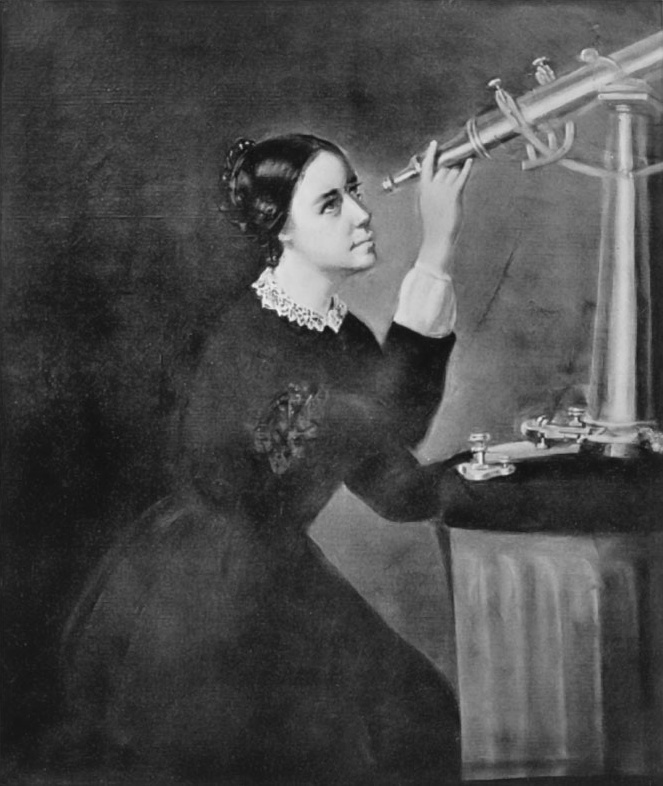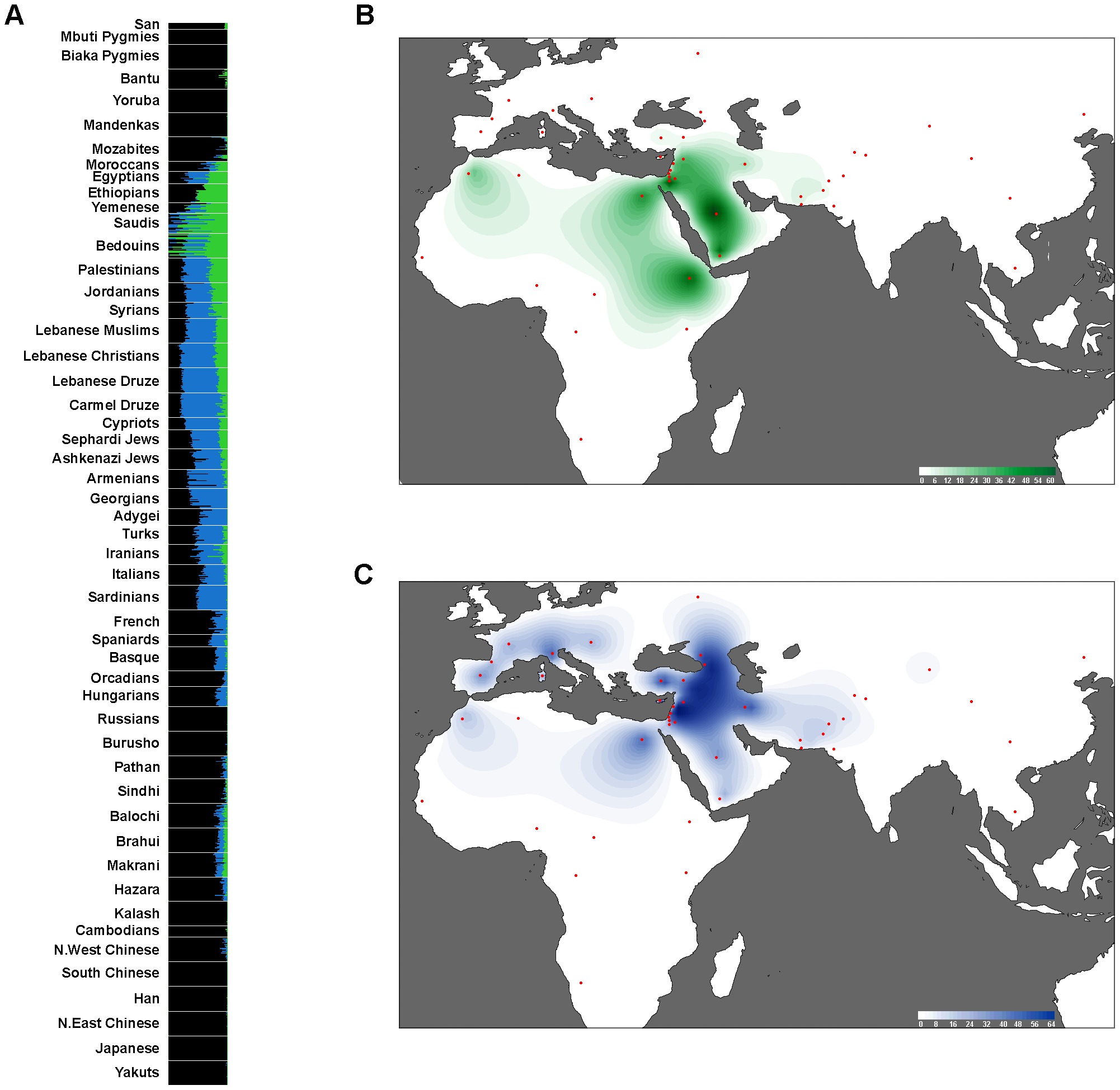|
Shadia Habbal
Shadia Rifa'i Habbal (Arabic: شادية رفاعي حبال) is a Syrian-American astronomer and physicist specialized in Space physics. A professor of Solar physics, her research is centered on Solar wind and Solar eclipse. Life and education She was born as Shadia Na'im Rifa'i in the city of Homs where she finished secondary education, she enrolled in the University of Damascus where she received her bachelor in physics and math. She received a master in physics from the American University of Beirut before receiving her PhD from the University of Cincinnati. Career She completed a one-year ASP term at the National Center for Atmospheric Research (1977-1978) and joined the Harvard-Smithsonian Center for Astrophysics, Center for Astrophysics Harvard & Smithsonian in 1978 where she established a research group in solar-terrestrial physics, a position she kept until 2000. Habbal was also appointed as a professor of solar terrestrial physics at the Institute of Mathematical and Ph ... [...More Info...] [...Related Items...] OR: [Wikipedia] [Google] [Baidu] |
Homs, Syria
ar, حمصي, Himsi , population_urban = , population_density_urban_km2 = , population_density_urban_sq_mi = , population_blank1_title = Ethnicities , population_blank1 = , population_blank2_title = Religions , population_blank2 = , population_density_blank1_km2 = , population_density_blank1_sq_mi = , timezone = EET , utc_offset = +2 , timezone_DST = EEST , utc_offset_DST = +3 , coordinates = , elevation_footnotes = , elevation_m = 501 , elevation_ft = , postal_code_type = , postal_code = , area_code = Country code: 963 City code: 31 , geocode = C2528 , blank_name = Climate , blank_info = Csa , blank1_name ... [...More Info...] [...Related Items...] OR: [Wikipedia] [Google] [Baidu] |
International Astronomical Union
The International Astronomical Union (IAU; french: link=yes, Union astronomique internationale, UAI) is a nongovernmental organisation with the objective of advancing astronomy in all aspects, including promoting astronomical research, outreach, education, and development through global cooperation. It was founded in 1919 and is based in Paris, France. The IAU is composed of individual members, who include both professional astronomers and junior scientists, and national members, such as professional associations, national societies, or academic institutions. Individual members are organised into divisions, committees, and working groups centered on particular subdisciplines, subjects, or initiatives. As of 2018, the Union had over 13,700 individual members, spanning 90 countries, and 82 national members. Among the key activities of the IAU is serving as a forum for scientific conferences. It sponsors nine annual symposia and holds a triannual General Assembly that sets policy ... [...More Info...] [...Related Items...] OR: [Wikipedia] [Google] [Baidu] |
Syrian Emigrants To The United States
Syrians ( ar, سُورِيُّون, ''Sūriyyīn'') are an Eastern Mediterranean ethnic group indigenous to the Levant. They share common Levantine Semitic people, Semitic roots. The cultural and linguistic heritage of the Syrian people is a blend of both indigenous elements and the foreign cultures that have come to inhabit the Syria (region), region of Syria over the course of thousands of years. The mother tongue of most Syrians is Levantine Arabic, which came to replace the former mother tongue, Aramaic, following the Muslim conquest of the Levant in the 7th century. The conquest led to the establishment of the Caliphate under successive Arabs, Arab dynasties, who, during the period of the later Abbasid Caliphate, promoted the use of the Arabic language. A minority of Syrians have retained Aramaic which is still spoken in its Eastern Aramaic languages, Eastern and Western Neo-Aramaic, Western dialects. In 2018, the Syrian Arab Republic had an estimated population of 19.5 milli ... [...More Info...] [...Related Items...] OR: [Wikipedia] [Google] [Baidu] |
Women Astronomers
The following is a list of astronomers, astrophysicists and other notable women who have made contributions to the field of astronomy. __NOTOC__ A * Madge Adam (1912–2001), English solar astronomer * Maggie Aderin-Pocock (born 1968), English space scientist * Conny Aerts (born 1966), Belgian astrophysicist specializing in asteroseismology * Aglaonike (c. 1st or 2nd Century BCE), ancient Greek astronomer and thaumaturge * María Luisa Aguilar Hurtado (1938–2015), Peruvian astronomer * Eva Ahnert-Rohlfs (1912–1954), German variable star astronomer * Elizabeth Alexander (1908–1958), English geologist and physicist * Leah Allen (1884–1973), American astronomer and educator * Adelaide Ames (1900 - 1932), American astronomer * Anja Cetti Andersen (born 1965), Danish astronomer focused on cosmic dust * Necia H. Apfel (born 1930), American astronomer and educator * Alice Archenhold (1874–1943), German astronomer * Anne Archibald, Canadian astronomer and educator B ... [...More Info...] [...Related Items...] OR: [Wikipedia] [Google] [Baidu] |
Syrian Women Scientists
Syrians ( ar, سُورِيُّون, ''Sūriyyīn'') are an Eastern Mediterranean ethnic group indigenous to the Levant. They share common Levantine Semitic roots. The cultural and linguistic heritage of the Syrian people is a blend of both indigenous elements and the foreign cultures that have come to inhabit the region of Syria over the course of thousands of years. The mother tongue of most Syrians is Levantine Arabic, which came to replace the former mother tongue, Aramaic, following the Muslim conquest of the Levant in the 7th century. The conquest led to the establishment of the Caliphate under successive Arab dynasties, who, during the period of the later Abbasid Caliphate, promoted the use of the Arabic language. A minority of Syrians have retained Aramaic which is still spoken in its Eastern and Western dialects. In 2018, the Syrian Arab Republic had an estimated population of 19.5 million, which includes, aside from the aforementioned majority, ethnic minorities such a ... [...More Info...] [...Related Items...] OR: [Wikipedia] [Google] [Baidu] |
Syrian Physicists
Syrians ( ar, سُورِيُّون, ''Sūriyyīn'') are an Eastern Mediterranean ethnic group indigenous to the Levant. They share common Levantine Semitic roots. The cultural and linguistic heritage of the Syrian people is a blend of both indigenous elements and the foreign cultures that have come to inhabit the region of Syria over the course of thousands of years. The mother tongue of most Syrians is Levantine Arabic, which came to replace the former mother tongue, Aramaic, following the Muslim conquest of the Levant in the 7th century. The conquest led to the establishment of the Caliphate under successive Arab dynasties, who, during the period of the later Abbasid Caliphate, promoted the use of the Arabic language. A minority of Syrians have retained Aramaic which is still spoken in its Eastern and Western dialects. In 2018, the Syrian Arab Republic had an estimated population of 19.5 million, which includes, aside from the aforementioned majority, ethnic minorities such as ... [...More Info...] [...Related Items...] OR: [Wikipedia] [Google] [Baidu] |
Syrian Astronomers
Syrians ( ar, سُورِيُّون, ''Sūriyyīn'') are an Eastern Mediterranean ethnic group indigenous to the Levant. They share common Levantine Semitic roots. The cultural and linguistic heritage of the Syrian people is a blend of both indigenous elements and the foreign cultures that have come to inhabit the region of Syria over the course of thousands of years. The mother tongue of most Syrians is Levantine Arabic, which came to replace the former mother tongue, Aramaic, following the Muslim conquest of the Levant in the 7th century. The conquest led to the establishment of the Caliphate under successive Arab dynasties, who, during the period of the later Abbasid Caliphate, promoted the use of the Arabic language. A minority of Syrians have retained Aramaic which is still spoken in its Eastern and Western dialects. In 2018, the Syrian Arab Republic had an estimated population of 19.5 million, which includes, aside from the aforementioned majority, ethnic minorities such as ... [...More Info...] [...Related Items...] OR: [Wikipedia] [Google] [Baidu] |
Living People
Related categories * :Year of birth missing (living people) / :Year of birth unknown * :Date of birth missing (living people) / :Date of birth unknown * :Place of birth missing (living people) / :Place of birth unknown * :Year of death missing / :Year of death unknown * :Date of death missing / :Date of death unknown * :Place of death missing / :Place of death unknown * :Missing middle or first names See also * :Dead people * :Template:L, which generates this category or death years, and birth year and sort keys. : {{DEFAULTSORT:Living people 21st-century people People by status ... [...More Info...] [...Related Items...] OR: [Wikipedia] [Google] [Baidu] |
Year Of Birth Missing (living People)
A year or annus is the orbital period of a planetary body, for example, the Earth, moving in its orbit around the Sun. Due to the Earth's axial tilt, the course of a year sees the passing of the seasons, marked by change in weather, the hours of daylight, and, consequently, vegetation and soil fertility. In temperate and subpolar regions around the planet, four seasons are generally recognized: spring, summer, autumn and winter. In tropical and subtropical regions, several geographical sectors do not present defined seasons; but in the seasonal tropics, the annual wet and dry seasons are recognized and tracked. A calendar year is an approximation of the number of days of the Earth's orbital period, as counted in a given calendar. The Gregorian calendar, or modern calendar, presents its calendar year to be either a common year of 365 days or a leap year of 366 days, as do the Julian calendars. For the Gregorian calendar, the average length of the calendar year (the ... [...More Info...] [...Related Items...] OR: [Wikipedia] [Google] [Baidu] |
NASA Group Achievement Award
The NASA Group Achievement Award (GAA) is an award given by NASA to groups of government or non-government personnel in recognition of group accomplishments contributing to NASA's mission. The criteria for earning the Group Achievement Award are: # The quality of results and the Agency or multi-Center level of impact on programs or operations; # Effective management of cost and schedule; # Customer satisfaction; # Team growth and capacity for future contribution (Government personnel only); and # Additional credit for development of innovative approaches, use of and contributions to lessons-learned data banks, and/or # Success in responding to unforeseen crises. See also *List of NASA awards Awards and decorations of the United States government are civilian awards of the U.S. federal government which are typically issued for sustained meritorious service, in a civilian capacity, while serving in the U.S. federal government. Certain ... References Awards and decorations ... [...More Info...] [...Related Items...] OR: [Wikipedia] [Google] [Baidu] |
NASA
The National Aeronautics and Space Administration (NASA ) is an independent agency of the US federal government responsible for the civil space program, aeronautics research, and space research. NASA was established in 1958, succeeding the National Advisory Committee for Aeronautics (NACA), to give the U.S. space development effort a distinctly civilian orientation, emphasizing peaceful applications in space science. NASA has since led most American space exploration, including Project Mercury, Project Gemini, the 1968-1972 Apollo Moon landing missions, the Skylab space station, and the Space Shuttle. NASA supports the International Space Station and oversees the development of the Orion spacecraft and the Space Launch System for the crewed lunar Artemis program, Commercial Crew spacecraft, and the planned Lunar Gateway space station. The agency is also responsible for the Launch Services Program, which provides oversight of launch operations and countdown management f ... [...More Info...] [...Related Items...] OR: [Wikipedia] [Google] [Baidu] |
Stellar Corona
A corona ( coronas or coronae) is the outermost layer of a star's atmosphere. It consists of plasma. The Sun's corona lies above the chromosphere and extends millions of kilometres into outer space. It is most easily seen during a total solar eclipse, but it is also observable with a coronagraph. Spectroscopic measurements indicate strong ionization in the corona and a plasma temperature in excess of , much hotter than the surface of the Sun, known as the photosphere. The word ''corona'' is , in turn derived . History In 1724, French-Italian astronomer Giacomo F. Maraldi recognized that the aura visible during a solar eclipse belongs to the Sun, not to the Moon. In 1809, Spanish astronomer José Joaquín de Ferrer coined the term 'corona'. Based in his own observations of the 1806 solar eclipse at Kinderhook (New York), de Ferrer also proposed that the corona was part of the Sun and not of the Moon. English astronomer Norman Lockyer identified the first element unknown o ... [...More Info...] [...Related Items...] OR: [Wikipedia] [Google] [Baidu] |

.jpg)





